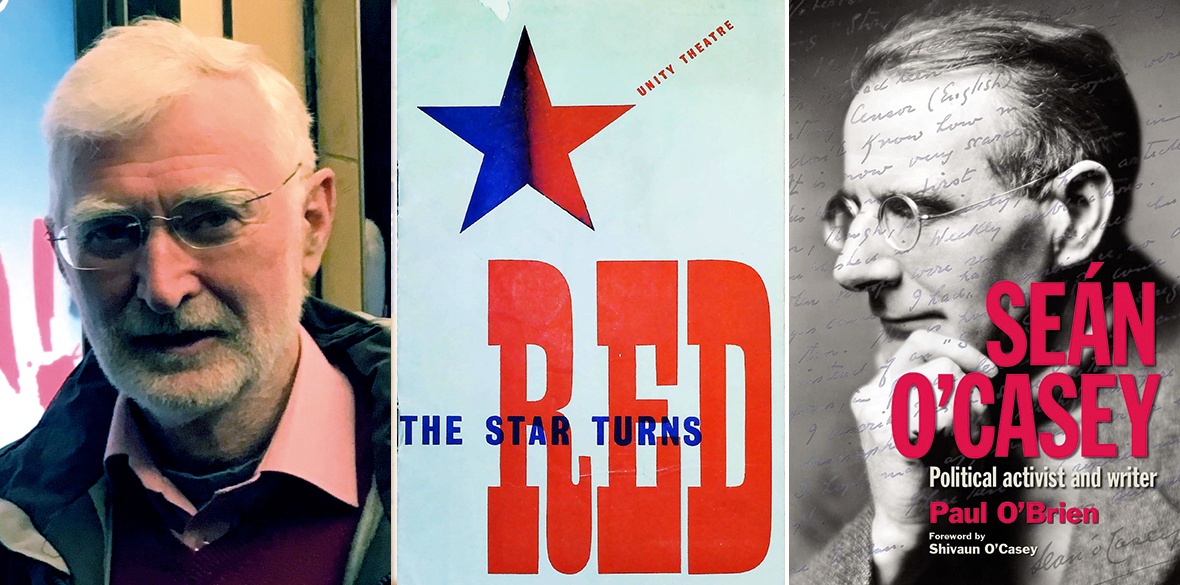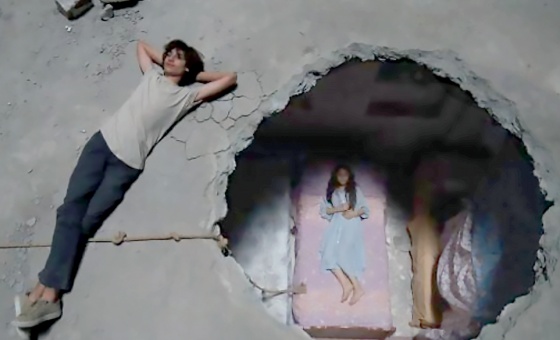This is the last article you can read this month
You can read more article this month
You can read more articles this month
Sorry your limit is up for this month
Reset on:
Please help support the Morning Star by subscribing here
PAUL O’BRIEN, the first Irish critic to publish a full-length political biography of Sean O’Casey from a left-wing perspective, talks to Jenny Farrell about some largely unknown aspects of the first proletarian dramatist of international significance writing in English.
Despite four major biographies in existence, O’Brien felt that “they offered no real examination explaining O’Casey’s development in terms of his political route from a young man involved with the Gaelic League and the IRB, and later the ICA, the socialist and then the communist movement. This background made O’Casey one of the most political writers of his generation.”
However, as O’Brien insists, while politics were central to O’Casey’s life, equally important was the artistic craft of writing drama. As a young man, he absorbed the works of Shakespeare and Boucicault. Alongside such significant influences as Jim Larkin and Charles Darwin, his fellow Dubliner Bernard Shaw made a lifelong impact: “Shaw transformed his view of drama and politics.”
Initially, it was Shaw’s extensive prefaces that interested O’Casey, and later the plays themselves. While O’Casey’s first unproduced dramas were Shaw-inspired discussion plays, it is only in his later work that he achieves the Shavian fusion of forceful intelligence and comic invention that was to become a hallmark of his own writing.
The Plough and the Stars is indebted to Shaw’s Saint Joan in the way it artistically fuses the drama and the politics. Shaw had stood with the locked-out workers in 1913, and underwent a significant change in 1916, overcoming his reservations about republicanism and demanding that Britain end the executions of the leaders of the rebellion. O’Casey later remarked “that it was Shaw and Larkin who swung him to the left more than any other single influence.”
Exploring why O’Casey, despite his prolific output, is almost exclusively known for his Dublin trilogy, O’Brien points first to the hostile reception in Dublin of The Plough and the Stars, and in particular to the rejection by Yeats in 1928 of The Silver Tassie, although O’Casey’s plays had saved The Abbey from financial ruin earlier in the decade.
However, “the Establishment resented the themes of O’Casey’s post-Dublin plays, their open and satirical representation of the Church-state relationship in the Irish Free State in Cock-a-Doodle Dandy or The Bishop’s Bonfire, the expressionist treatment of the 1929 economic crisis in The Gates Flew Open, his support for the Spanish Republic in The Star Turns Red, with its exploration of the relationship between the Church and fascism — all of which were an anathema to the Irish Establishment.
“They turned their back on O’Casey and despite the occasional staging of plays other than the Dublin trilogy, such as the celebrated production of The Drums of Father Ned, at the Gaiety Theatre (1955), these later plays are rarely produced.”
This was in stark contrast to the socialist countries. “The USSR published the first bibliography of his work (1964) and his plays were widely performed there. O’Casey was in contact with the Soviet cultural establishment as early as 1925, through the Soviet emissary Raissa Lomonovska; he also met and admired the Soviet film-maker Sergei Eisenstein. His support for the Soviet Union strengthened during and after World War II. His plays were staged there not only in mainstream theatres but also by working-class theatre groups across the country.”
The roots of his popularity in East Germany in particular go back to the 1920s, to the influence of the communist dramatists and innovators such as Brecht, Toller and Piscator.
“Toller’s Transformations influenced The Silver Tassie, and generally these playwrights inspired O’Casey’s own experimentation with dramatic form.” After 1945, this radical theatre tradition was one of the reasons why O’Casey was performed in both German states. In West Germany, despite being championed by the acclaimed director Peter Zadek, disturbances took place during the performance of The Silver Tassie in 1953 and in 1968, when the audiences rioted and walked out of The Star Turns Red.
In the GDR, on the other hand, Brecht’s Berliner Ensemble or Langhoff’s Deutsches Theater, but also many theatres throughout the Republic were receptive to his work. “Purple Dust ran in repertoire for 12 years,” and is still available on film from the Berliner Ensemble production.
O’Casey was one of the most widely performed Western dramatists in the GDR. “His work enjoyed similar popularity across the Soviet Bloc, while Dublin, London and New York stages turned their backs on him.” Partly, O’Brien explains, this was “due to the challenges of integrating the tragic and comic expressionist techniques, as envisioned by O’Casey. But also, his critics felt that O’Casey had ‘lost his way,’ was no longer in touch with mainstream theatre.”
On the other hand, the working-class theatre companies were much more open to O’Casey’s plays. Nevertheless, “their own tradition of and focus on agit-prop theatre and the realist tradition did not lend itself very well to O’Casey’s lyrical, imaginative and non-realist style.”
When the Abbey turned down The Star Turns Red in 1939, and the play was banned in Britain by the Lord Chamberlain’s Office, Unity Theatre put on a production that ran for 12 weeks.” O’Brien explains, “O’Casey enjoyed a good relationship with Unity Theatre in their common pursuit to bring drama to the working class. The example of Unity Theatre inspired the foundation of The New Theatre Group in Dublin and the Left Book Club Dramatic Group Belfast in 1937. They were also influenced by the New York Group Theatre, perhaps the most innovative ensemble in the Western world at that time.”
However, “the repertoire of these working-class-based companies were largely directly political in their purpose, favouring the Living Newspaper style of theatre, chants, loudhailers and other forms associated with agitprop.”
Asked about O’Casey and the working-class cultural tradition today, O’Brien says “O’Casey’s shorter one and two-act plays, such as Hall of Healing would be highly suited to amateur working-class theatre groups who are in a unique position to highlight the contemporary relevance of O’Casey’s work. Some attempts have been made in Dublin by the ÁNU Theatre Group, and the East Wall History Group in conjunction with the Seán O’Casey Centre.”
But we await a full retrospective of his entire work, “O’Casey was the Abbey’s most successful playwright — they owe him that.”











